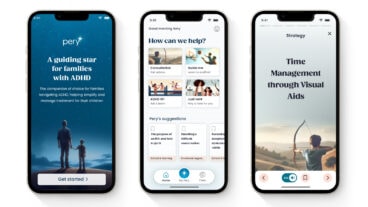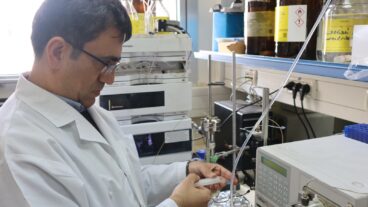Prof. Rafael Beyar performs a remote manipulation that opened a 71-year-old man’s blocked coronary artery with an inflated balloon and inserted a metallic mesh stent to hold it open.It seems like something out of a futuristic operating room, but for Israeli startup Navicath, the future is now. The Haifa-based company has developed a remote-control technique that enables doctors to utilize a joystick to perform catheterizations which open blocked arteries.
According to the company’s directors, this will make the two million therapeutic catheterizations conducted worldwide every year – and three times that number of diagnostic catheterizations – more efficient and safer for both the patient and the doctor.
In contrast to x-ray technicians who leave the room every time a patient is x-rayed, doctors who administer catheterization generally work close to the patient and the machine. The doctor relies on the image from the x-ray machine in real time in order to insert with his own hands a catheter with a wire on the end into the patient’s body. In order to avoid exposure to radiation, the doctors wear a lead garment, which puts a lot of weight on their backs and necks. Doctors who administer catheterization are 5% more likely to develop cancer than other doctors.
NaviCath’s system operates by remote control. It enables the doctor to control the treatment while standing outside the treatment room. The doctor holds a joystick, which is used to guide the catheter or wire to the target.
In addition to removing the doctor from the room, NaviCath founder managing director Tal Wenderow says that the system can catheterize faster and allow more accurate manipulation of thin metal wires through the femoral vein in the groin and on to the arteries in the heart. This innovation will save hospitals a great deal of money and save patients time in the operating room.
Although cardiologists using the joystick cannot feel the “give” of the blood vessels and the blockage that they ordinarily do when manually pushing in the wire and a tiny balloon at the end, the technique offers greater exactitude, according to Prof. Rafael Beyar, dean and head of cardiology at the Technion’s Rappaport Medical School who helped develop the innovative system.
Beyar and Wenderow said that while the media were likely to call the device a “robot,” this was not technically accurate, as the cardiologist controls it directly, and it does not make decisions on its own. “Remote manipulation” by joystick is the correct term, they said.
Potentially, the remote-control technique – which has carried out 14 successful catheterizations in Israel and Romania since March – could eventually be used to perform catheterization, angioplasty (balloon therapy), and the insertion of supportive stents on patients in another city, country, or even continent.
Wenderow told ISRAEL21c that he expects the FDA to approve clinical trials in the U.S. within the next year, and he’s hopeful that American hospitals will be equipped with the system by 2007.
Last week, however, interventional cardiologists from around the world were able to view the NaviCath system in action as they witnessed the world’s first live broadcast by satellite of a remote manipulation – conducted by Beyar – that opened a 71-year-old man’s blocked coronary artery with an inflated balloon and inserted a metallic mesh stent to hold it open.
The live broadcast – hosted by Prof. Yaron Almagor, head of Shaare Zedek Hospital’s interventional cardiology unit – emanated from the catheterization labs at Jerusalem’s Shaare Zedek Medical Center and was viewed by over 12,000 cardiologists attending the annual Transcatheter Cardiovascular Therapeutics conference in Washington, DC.
American interventional cardiologists on the podium, who questioned Beyar and the Israeli team throughout the procedure, welcomed the experimental technology as a very promising one and even the dawning of a new era in the field. Wenderow said he didn’t think it would be difficult to convince doctors to move from the operating room to outside the room.
“The response to the broadcast was very encouraging,” Wenderow told ISRAEL21c. “We received praise on the technology, as well as the size of the system, and we heard from a number of physicians in the U.S. who are interested in collaborating with us on clinical trials.”
“Even in the current method, doctors rely on x-ray images. Physical proximity to the patient doesn’t help. On the contrary, our system gives a more accurate image, and improves the doctors’ work. Treatment is more accurate and safer,” he said. “The system makes doctors’ work much safer and more pleasant. We’re not taking the doctors’ prestige away from them, nor their decision-making, nor the technical navigating of the device.
“Our system is not meant to take the place of the physician – we’re not taking the physician out of the loop, but on the contrary we’re helping him to manipulate more accurately,” said Wenderow.
With two million therapeutic catheterizations conducted worldwide every year, and three times that number of diagnostic catheterizations, the market is estimated at $3.5 billion. And Wenderow said that the NaviCath system is far more inexpensive and efficient to use than any potential competitors in the U.S.
“A company called Stereotaxis has built a navigation system that uses a magnetic field. Their system is installed both above and below the patient. A miniature magnet is attached to the wire, which the system itself guides to the target. The disadvantage of the system is its $700,000 cost, the fact that a catheterization room must be shut down for a day to install the machine, and the fact that as of now, they can move only the wire, not the stent itself (the stent is the device that the catheterization doctor wants to insert into the artery, using the catheter and the wire). Their system also dictates which catheter the doctor uses, and doctors don’t like to have things like that dictated to them,” Wenderow told Globes.
“For the hospital, the process of adopting our technology is very simple. It consists of an add-on to the current system, which needs only ten minutes to assemble.” The cost of the NaviCath system is $60,000, he added.
According to Wenderow, NaviCath’s connection to the Technion and Beyar have helped it through the complicated research and testing process.
“The basic technology has already been tested on ten patients at the Rambam Medical center, and we’ll soon begin a trial of the complete solution at Rambam and two other hospitals. Our connections with the Technion technology incubator and Rambam give us an enormous advantage. We use the Technion incubator’s laboratories and equipment a lot, and Beyar’s link with Rambam enables us to see how things work in the field.
“When the results of the clinical trial are in, even before we get US Food and Drug Administration approval, we’ll start contacting opinion makers. The main opinion makers are doctors, although each hospital has its own decision makers, who aren’t necessarily doctors. For the market to accept the machine, however, leading senior doctors must support it. We’ll conduct a $3.5 million financing round soon, which we can use to get sales started.”
Wenderow has raised $270,000 from the Technion Entrepreneurial Incubator (TEIC), which has been on the receiving end of investments from ProSeed Venture Capital Fund, Vertex Management Israel, and the Vitalife Life Sciences Fund. He has raised $500,000 more from private investors. TEIC operates under the auspices of Technion – Israel Institute of Technology.
(Based on reports in Globes and The Jerusalem Post)












